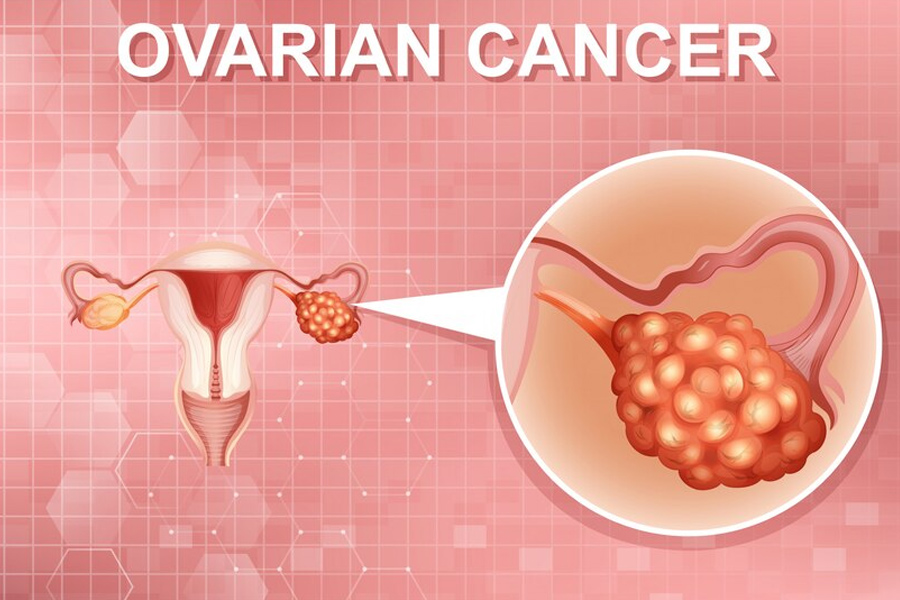
As part of her Interim Budget 2024, Union Finance Minister Nirmala Sitharaman recently announced the government's plan to promote cervical cancer vaccination for girls aged 9–14. The initiative is a big milestone in the realm of women's health and safety, and sheds light on the importances of recognising and taking measures against common gynaecological cancers, including ovarian cancer.
Table of Content:-
Speaking with the OnlyMyHealth team, Dr (Prof) Vijay Patil, Consultant-Medical Oncology, PD Hinduja Hospital and Medical Research Centre, Mahim, discussed the prevalence of the disease in India and how it can be prevented.
Also Read: The Silent Illness: Expert Sheds Light On The Risk Factors Of Ovarian Cancer
Ovarian Cancer Prevalence

According to a 2017 study published in the journal Cancer Biology and Medicine, ovarian cancer accounts for an estimated 2.39 lakh new cases and 1.52 lakh deaths each year. The study further reports that one in 75 women has a lifetime risk of developing the disease, whereas one in 100 women could succumb to it.
In India, ovarian cancer, or epithelial ovarian cancer, is one of the most common gynaecological tumours, said Dr Patil, adding that the country has the second highest numbers of ovarian cancer in the Asian region.
“Unfortunately, this tumour prevalence is on the rise and is mostly seen in advanced stages, which require both surgical resection and chemotherapy,” the doctor shared.
While in recent years, with the advent of better systemic therapies, the outcomes in this tumour have improved, the doctor highlighted the silent and asymptomatic nature of the cancer, which leads to delayed diagnosis.
Silent Symptoms Of Ovarian Cancer
Silent ovarian cancer refers to a type of ovarian cancer that often develops without causing any noticeable symptoms in its early stages. This either means that the disease does not show any symptoms at all or that they are very mild and therefore not suspected of being cancer. Lack of clear symptoms often leads to a late-stage diagnosis, mostly when the disease is more advanced, according to Dr Patil.
Therefore, let us take a look at five of these symptoms, which are most common with ovarian cancer but are often overlooked due to their mild nature:
- Persistent bloating
- Abdominal pain
- Fullness even after a light meal
- Urinary problems like frequent urination, pain, and pressure in the bladder
- Menstrual irregularities
Also Read: Cervical Cancer Awareness Month: How Does HPV Cause Cervical Cancer?
Can It Be Prevented?

Ovarian cancer is preventable, according to Dr Patil.
There are three types of prevention for ovarian cancers, which include:
Primordial prevention is a type of prevention where you educate people about the risk factors for cancer. In the case of ovarian cancer, factors such as heredity, lifestyle habits, and hormonal changes can contribute to the development of the disease. Additionally, obesity, late pregnancy, and hormonal therapies are some of the modifiable risk factors.
Primary prevention is a type of prevention that involves people who have developed risk factors for cancer but have not developed the cancer yet. Making necessary changes, such as maintaining a healthy weight, eating a balanced, anti-inflammatory diet, and working out regularly, can reduce a person’s risk of cancer.
Secondary prevention involves undergoing annual cancer screening, especially if a person is over 40 years of age. This can help detect the cancer early and provide effective treatment for the patient.

Conclusion
Ovarian cancer is largely asymptomatic and presents at an advanced stage. With the help of primordial and primary prevention, one can reduce their risk of the disease. Regular screening can also help detect the cancer on time, ensuring a successful outcome.
Also watch this video
How we keep this article up to date:
We work with experts and keep a close eye on the latest in health and wellness. Whenever there is a new research or helpful information, we update our articles with accurate and useful advice.
Current Version